SUMMARY
This is AI generated summarization, which may have errors. For context, always refer to the full article.
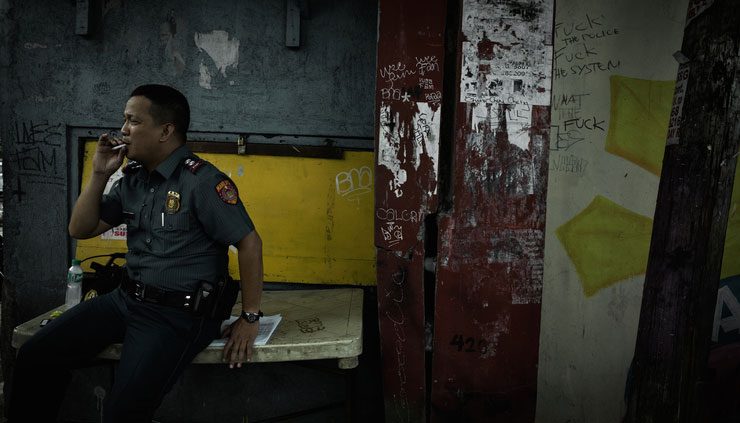
This compilation was migrated from our archives
Visit the archived version to read the full article.
Police Superintendent Robert C. Domingo, badge number 0-08627, commander of the 84 villages of Sta. Ana, is sitting at his desk at Police Station 6, smoking a cigarette. It is late afternoon.
He blows out the smoke.
“If it’s your time to die, it’s your time to die,” he says.
The chief of PS-6 is not a coward. The reason he is not a coward is because his commanders are not cowards. His president is no coward. His chief of police is no coward. Domingo tells his men, all 280 of them, that they can’t dare be cowards themselves. “Reality bites,” he says about young people involved in drugs. “Zero tolerance,” he calls his policy on erring cops. His men are “the last line of defense,” the pushers killed were “in flagrante delicto,” and the three months since the election of the new president have become “the golden days” of the Philippine National Police.
“We are very dead serious against illegal drugs,” he says. “This is not for us, this is for my son, and the future generation of this beloved Republic of the Philippines. We don’t want this Republic of the Philippines to become a narco state.”
PS-6, one of 11 stations under the Manila Police District, hunkers under the shadow of the Church of the Abandoned. Domingo’s uniform cap hangs on the wall behind him. There is a framed print of the Philippine National Police Academy’s Class of ’99. His desk is piled with the paraphernalia of the drug war: letters of assurance from village chiefs, faxes with information from concerned citizens, a folder from headquarters with instructions on how to testify at court proceedings.
Sta. Ana, population 185,000, still has its crimes. Domingo says most of the cases are petty theft – a stolen saucepan, a snatching in front of a school, a robbery in a jeep. The worst, a murder, was the result of an argument between one drunk saying another drunk’s roast pig was too salty.
This is what the golden age of policing looks like from PS-6 Sta. Ana. The boys in blue have the backing of the commander-in-chief. Combat pay is increasing. Lawyers have been provided to stations. Policing is no longer political, so long as a cop stays clean and stays tough.
Domingo says it used to be different. Policemen were afraid, and the people were afraid of the police. Drug lords had connections, and so did criminals. The concrete façade of the Dagonoy precinct is still cracked from when someone lobbed a live grenade at the front entrance.
“Now it’s the other way around,” Domingo says. “They’re the ones we’re hunting. They’re the ones who are hiding. They’re the ones who are leaving.”
Ask him what he thinks of His Excellency Rodrigo Roa Duterte, and he will give you one answer.
“Legendary.”
“
Kill them all. When I become president, I’ll order the police and the military to find these people and kill them.”
– Rodrigo Duterte
The tale of Alias Crocodile
Domingo is telling a story. Like most of his stories, he is proving a point. The point is that unlike any other moment in the last two decades, the people are standing with the police.
It begins with a man they call Crocodile, the toughest, meanest sonofabitch to have ever set foot in Santa Ana. Big and bad, a monster of a man, six feet tall and maybe an inch over. They say he shot at his neighbors. They say he beat up his sister. They say he tossed a firecracker out of his third floor window one day in May – tossed it out and boom, two children in the hospital and Crocodile nowhere to be found.
He was slippery and sly, say the cops on the beat. Long past the day the war on drugs was declared, Crocodile was still pushing drugs and raising a middle finger at law and order.
One day, the 800 residents of Village 767 gathered at a basketball court. The village officials said they were going to have a vote. They wanted the process democratic. They didn’t want to be accused of pointing fingers and taking sides.
Tell us who the dealers are, they said. Put the worst on top. No need to write down your names.
There was a box on a table. The lists went in. The village officials counted out the names, signed the bottom of the tally and handed the list over to the police.
The vote was unanimous – Crocodile.
For more than a month the cops watched Crocodile and his boys. Informants sent in details. A test buy came up positive. Permission for a drug bust operation was requested and granted.
Twenty cops gathered at the corner of Estrada Street in the early morning of August 28. An undercover cop climbed three flights and knocked on the door of Ryan Eder, 29, alias Crocodile. The story goes that Crocodile saw the bulge under the cop’s shirt. He ran into another room and pulled out a gun. The cop was faster on the trigger. Four shots, and off Crocodile went to meet his maker.
There was a sigh of relief when Crocodile was killed. Someone called Station 6 to say thank you. Someone sent a platter of steamed rice cakes. One village chief, the man who came running when Ryan Eder started emptying his magnum into the air on New Year’s Eve, said it was like having a fishbone pulled out of his throat.
These, says Domingo, are the golden days.
“
If I couldn’t convince you to stop, I’ll have you killed… if you’re into drugs, I’m very sorry. I’ll have to apologize to your family because you’ll surely get killed.”
– Rodrigo Duterte
The peace of Sta. Ana
Every day, or almost every day, the cops of PS-6 go out to smile. The smile is what matters, they say, when they knock on doors across the length and breadth of Sta. Ana. The operation is called Tokhang – “tok,” for knock, and “hangyo” for plead.
The cops go in teams. One of them holds the watch list of drug personalities: three sheets of charts highlighted in green and yellow and red. The names are sourced from village captains, councilors, and a range of informants. Some deliver their information by text message, others drop off letters at the PS-6 station. Confidential informants are voluntary, “because if you pay them, their information won’t be good.” They offer information because “they’re tired of what‘s happening.” Domingo says accusations do not automatically mean inclusion in the list. There is always validation.
Although those who surrender are moved to a reform list and are monitored for good behavior, the list gets longer after interviews are conducted.
“When they surrender,” says Domingo, “we ask them where they buy shabu. The one with the most names mentioned, that’s where we concentrate. That’s where the watch list is generated.”
The others, the ones like Crocodile who refuse or hide, are constantly monitored. If enough evidence is compiled, a buy-bust operation is arranged.
Those who surrender take an oath and sign an 8-point affidavit.
That, I voluntarily surrendered to the police / government authorities.
That, I am an illegal drug ___________ user / dependent / pusher.
That, I discovered that my involvement in drugs has no good effect.
That, I wanted to have a new peaceful life.
That, I submitted myself to authorities to seek help for me to be Rehabilitate and to cooperate with the PNP and the authorities to seek help for me to be rehabilitate and our communities and our country a
That I UNDERTAKE to STOP all my activities that violate RA 9165
That I am doing this act not just for myself, my family and community but for the betterment of my country, the PHILIPPINES;
That I am executing this Affidavit freely to attest to the truth of the Truth of the foregoing facts and for legal intents and purpose(s) it may serve.
In late August, the Sta. Ana Police Station was awarded a certificate of recognition by the National Police Commission for “having the highest number of surenderers” during the implementation of Project Double Barrel.
In the hundred days since the change in administration, 12 alleged drug personalities have been killed in drug operations across the three precincts of Sta. Ana, putting PS-6 seventh of eleven stations in Manila. They are among the 1,249 killed in police operations across the country. Each of the 12 allegedly fought back.
One of them was a 20-year-old student named Jeffrey Bunuan.
“
It will not be long before drug syndicates will be able to influence all aspects of government. We should put an end to this.”
– Rodrigo Duterte
The Scholar of Dagonoy
Jeffrey wanted to be a cop since he was seven years old. He wanted it so badly that he shaved his head into a mohawk after he saw the haircut on a policeman he worshipped as a teenager. He was a toddler when his father was stabbed to death across the clutch of shanties where forty of the Bunuan’s extended family live. Even after Joey Bunuan’s killer was arrested a full decade after his death, Jeffrey’s sights were set on the blue uniform of Manila’s finest.
For 11 years he was a scholar of Kaibigan Foundation, who described him as polite and soft-spoken. By the time Jeffrey Bunuan was twenty years old, he was the only one of the five Bunuan children to have a high school degree. He sold his phone to pay for his first year as a criminology student. He volunteered with the local force when they went on patrols. He was, much to his family’s confused pride, focused on the single dream he had when he was seven years old and realized justice could be found in the hands of the law.
The story his family tells begins with Jeffrey’s little sister Kim. Kim had just given birth, and Jeffrey, in typical fashion, had volunteered to give up his bed. He moved in with a friend, 20-year-old Jomar “Tutong” Manaois, who was renting a small first-floor room at Raymundo Street.
There was a commotion late on July 18. Cops flooded Raymundo. Jeffrey’s sister Lovely ran, past Mercurio, down Chromium and Radium to Raymundo. She said every street had gone dark. There were cops behind the barricades. She asked if she could go in. She said she had a brother and a cousin, Mark Anthony, who might be asleep inside. They said no, sorry, no one was allowed past.
The scene of the crime operatives arrived past 11:30. The news came over the radio – DZMM reported three dead at a drug buy-bust operation at Sta. Ana.
Lovely hounded the police. They told her easy, take it easy. Nothing has happened yet.
“
Do your duty, and if in the process you kill one thousand persons because you were doing your duty, I will protect you.”
– Rodrigo Duterte
The Shooting at Raymundo
Two Jeffreys died at 1799 Raymundo Street late on July 18. One of them was a criminal who pulled out a gun in defiance. The other was a model student murdered where he slept.
Domingo says raw information had been sent to the police station, with complaints from village captains about drugs at the Raymundo Street rental. He said the police cased the subjects, validated, and conducted a positive test buy before coordinating a buy bust with the Philippine Drug Enforcement Agency.
A policeman in plainclothes knocked at the Raymundo street door. Three young women ran out of the rented room. A spot report notes that Manaois “sensed that their client was a police undercover.” Manois was said to have fired at the policeman. The Bunuans were reported to have pulled out their own weapons.
All three were shot dead.
“Of course we have to protect ourselves,” Domingo says.
The three were described as armed suspects. Recovered evidence includes a magnum caliber 357 revolver with three live bullets, a homemade .38 caliber revolver, and a Smith and Wesson .38 caliber revolver, each with live ammunition. Also among the confiscated material were two lighters, three aluminum strips, a roll of aluminum, and 19 pieces of heat-sealed transparent plastic sachets containing white crystalline substance suspected to be metamphetamine hydrochloride, or shabu.
Manois’ wife, one of the three women who escaped before the shooting, sent word to Bunuan’s relatives her last sight of her husband was Manaois on his knees, his hands in the air. Domingo denies it – and in fact says the women’s survival is proof there was a gunfight “because women don’t shoot back.”
There is another, more sordid story. Manaois is cast as a thief who stole half a million and a diamond off a local syndicate. The police bust was only a cover for the recovery of the stolen goods. The Bunuans were collateral damage.
Domingo admits there may be some truth to the reports. Yes, there was information that there was a robbery. Yes, Manaois was a thief. Yes, he had stolen half a million and a diamond. No, the police did not confiscate the goods, because a member of Manaois’ gang had come in after the killings to take everything.
“The crime scene was cleaned up right? One of the members of their group who wasn’t there during that time went back to the house. He knew where everything was hidden.”
The police deny all allegations of misconduct. They call the dead Bunuans thieves and drug runners, including 18-year-old Mark Anthony, whom his family says was blind in one eye. The police deny streetlights had been switched off. They claim they followed proper protocol. The Manila Police Department marks the case solved. It is rare, says the homicide chief, to go beyond the original spot report if families do not lodge a protest.
“We won’t file a case,” said one of Jeffrey’s relatives. “We can’t win. It’s useless. What was it that Duterte said? He would issue presidential pardons to all the police accused. That means you don’t file a case, or your life will be on the line.”
“
If they pull out a gun, kill them. If they don’t, kill them, son of a whore, so it’s over, lest you lose the gun. I’ll take care of you.”
– Rodrigo Duterte
The Ten Percent
Why, asks those who believe Jeffrey Bunuan guilty, was he there if he were clean?
It is the question Domingo asks as proof of Jeffrey Bunuan’s guilt. There were six people in the room, including the women. He did not believe the Bunuans were only sleeping over.
“How can they sleep in that very small area? They will sleep in a standing position? It’s very difficult. It’s all an allegation that they’re sleeping there. And number one, that area is known for drug transactions. Why are you sleeping there in that small area?”
It is the same question asked by a 64-year-old village councilor, who says a good boy would have been sound asleep inside his own home. The drug war, says Apolonia Olivares, must be fought to prevent a citizenry of zombies lost to drugs. Jeffrey Bunuan’s mother should have known better.
Faces are averted down Onyx, past Dagonoy, along Radium and Raymundo. Residents sleep in the morning and are awake at night. Those living beside one-time drug dens lie on the street, afraid of their own beds.
“People are terrified here,” says a resident who refuses to be named. “They’re afraid they’ll be accused of fighting back. It’s like the movie, The Purge, you know? Every year the government holds a free-for-all killing, and then you get a prize with every kill. When the sirens go off – run and hide!”
They have a word for the fatal police operations: “Ma-Duterte.” Be careful, the cops might pull a Duterte on you, and say you fought back.
Like many of the 1,290 cases of suspects killed in police operations, it is near impossible to prove one side or the other.
What is left, instead, is a photograph.
It is a picture of a room, seven feet wide, roughly ten feet deep. A metal bunk bed stands flat against the back wall. A foam mattress takes up most of the floor, covered with a grimy sheet that might have once been white.
Mark Anthony Bunuan lies dead on the lower bunk. His feet are on the ground, bony knees bent under the black shorts as if he had been sitting at the edge of the bed before he fell back. His hands rest lightly on his chest. A gun is cupped under his skinny fingers.
Tutong Manois is curled on his side on the floor, just beside the mattress. His back is tucked against the right wall, his head pointing to the door, his knees folded under his elbow. There is a pool of blood under his head. A gun glows blue beside his hand.
Jeffrey Bunuan lies sprawled on his stomach, like a large boy asleep, his feet spattered with blood. There is a purple polka-dotted Hello Kitty pillow beneath him. The red soaks through the back of his orange shirt.
“
Even if it’s a member of my family [into drugs], kill him.”
– Rodrigo Duterte
The legend of Rodrigo Duterte
The PNP has announced there are 41,000 names on the current Metro Manila drug watch list. Domingo is attempting to hit his targets. He has been told he needs at least 2,000 people to surrender. He has only 849.
Like many of his policemen, the police chief of Sta. Ana believes Rodrigo Duterte exagerrates when he speaks of blood and killing. The promise to kill three million was “a slip of the tongue,” an emotional response to the horrors of the drug war. Domingo says he believes in human rights, the same way his president does. Every man has a right to life, says Domingo – “You can’t kill everyone.”
“The numbers of those who have surrendered are up to 700,000, but those killed are only at 3,000,” he says. “That’s probably not even ten percent. It’s just that so many of them fight back.”
Domingo is firm that the golden days of the police cannot be wasted. The drug menace must end. It is a gift to the next generation. Drugs affect families. They shrink minds and destroy homes.
It would be too painful, says Domingo, if he discovered his own son were involved in drugs. Better he became a drunk. Better he became anything else.
Duterte once said none of his children were involved in drugs – “But my order is, even if it is a member of my family, ‘kill him.’”
Like Jeffrey Bunuan, Domingo’s 18-year-old son wants to be a cop. It is a source of pride for the chief.
Ask Domingo what he thinks of Rodrigo Duterte’s order. Ask him if he would kill his own son.
“Reality bites, but it’s true.”
Domingo shrugs.
“My son would be useless to me. For me, that’s it.” – Rappler.com
(Editor’s note: All quotations have been translated to English).
More stories from this series:
According to the narrative now held acceptable under the administration of Rodrigo Duterte, Jhay Lord Clemente deserved to die.
Add a comment
How does this make you feel?
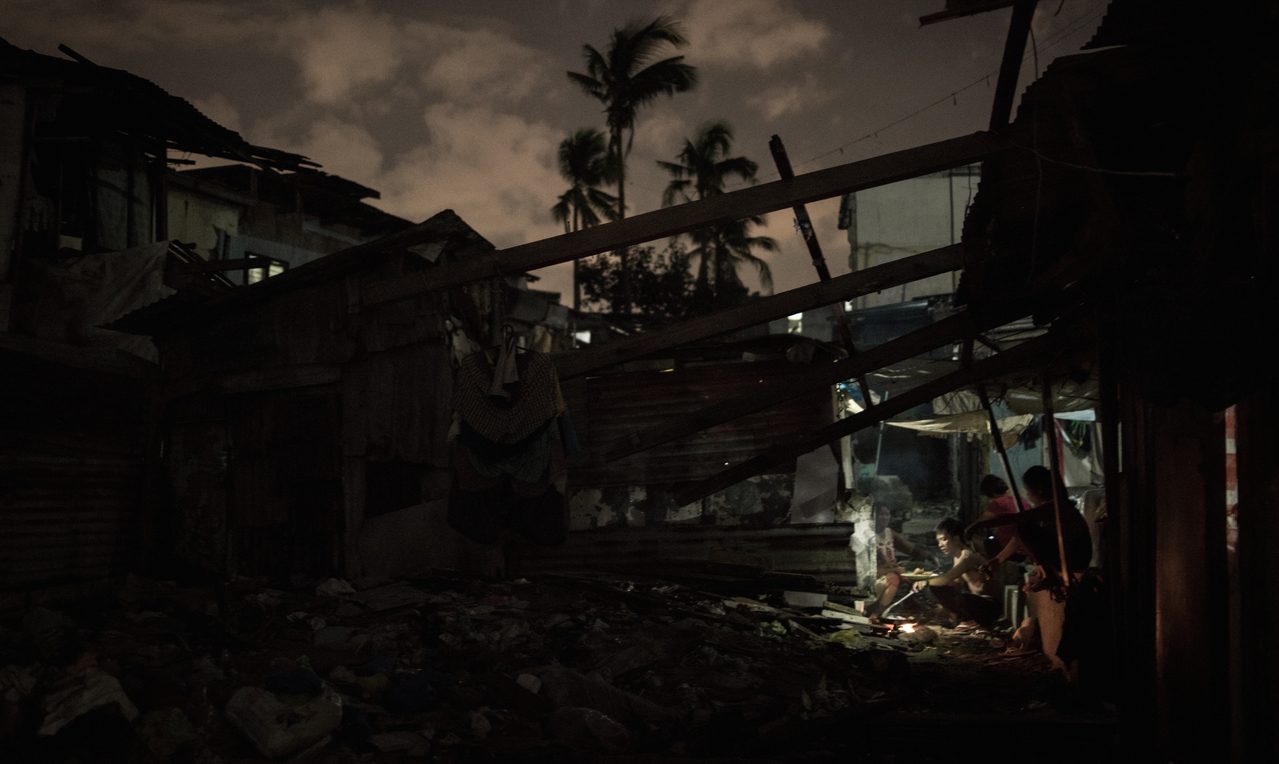
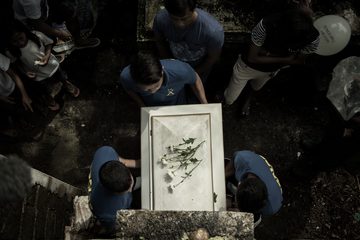
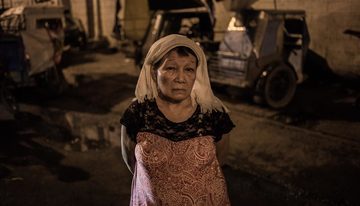


![[The Slingshot] Lito Patay’s 4 hours and 38 minutes of infamy](https://www.rappler.com/tachyon/2024/07/Lito-Patay-4-hours-infamy-July-19-2024.jpg?resize=257%2C257&crop=233px%2C0px%2C720px%2C720px)

![[The Slingshot] A Duterte and Bato cop named Patay](https://www.rappler.com/tachyon/2024/06/tl-lito-patay.jpg?resize=257%2C257&crop=322px%2C0px%2C720px%2C720px)






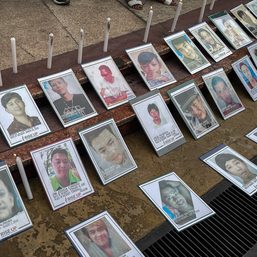
![[EDITORIAL] Sorry Arnie Teves, walang golf sa kulungan](https://www.rappler.com/tachyon/2024/03/animated-arnie-teves-arrest-carousel.jpg?resize=257%2C257&crop=310px%2C0px%2C720px%2C720px)
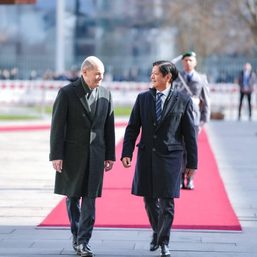
![[OPINION] Rodrigo Duterte and his ‘unconditional love’ for China](https://www.rappler.com/tachyon/2024/04/rodrigo-duterte-xi-jinping-august-2019.jpeg?resize=257%2C257&crop=91px%2C0px%2C900px%2C900px)


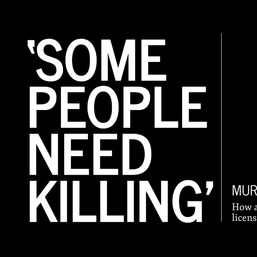

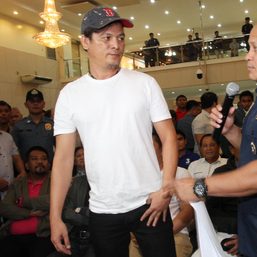
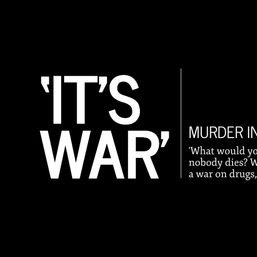
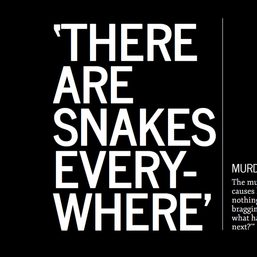
There are no comments yet. Add your comment to start the conversation.